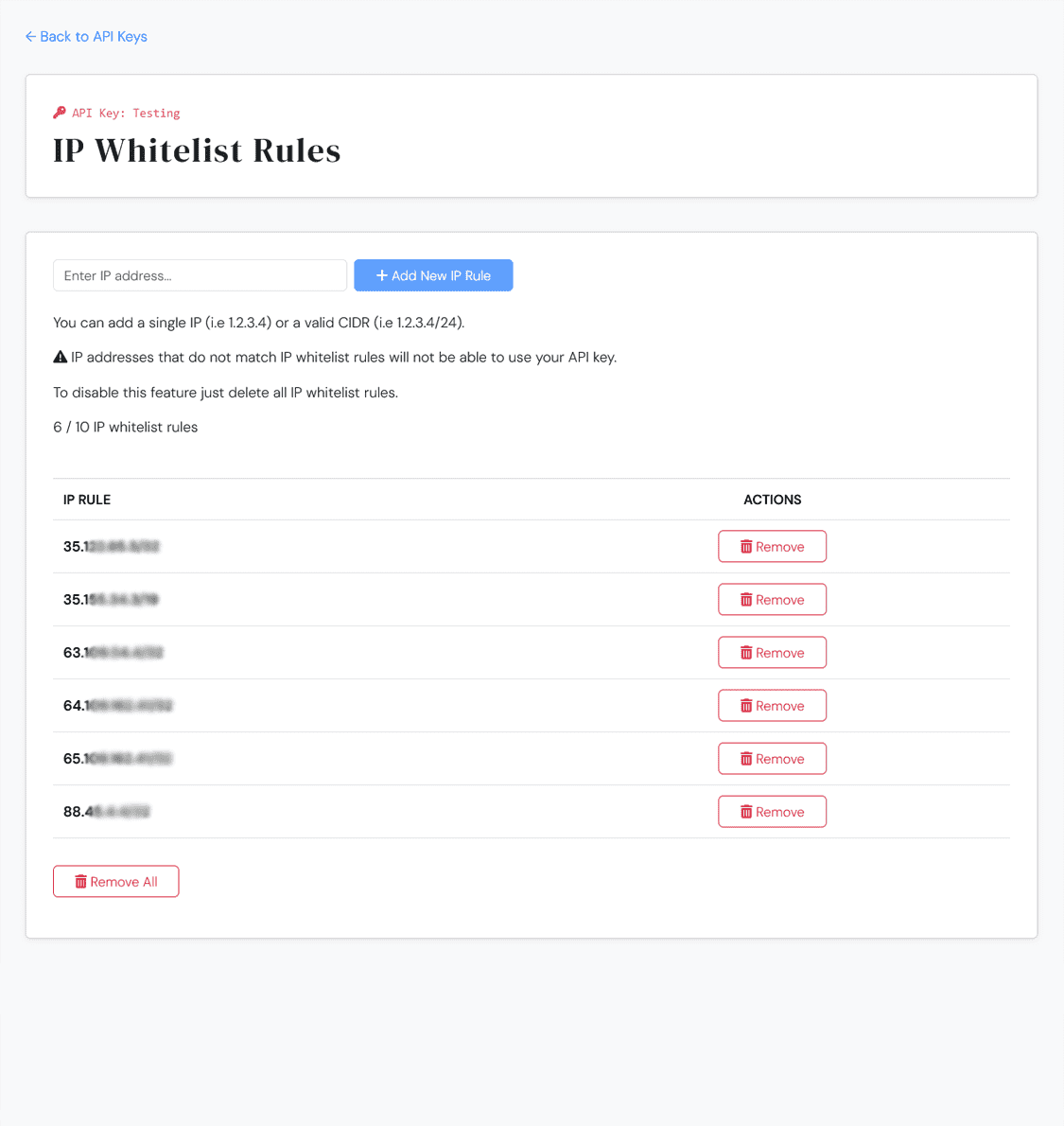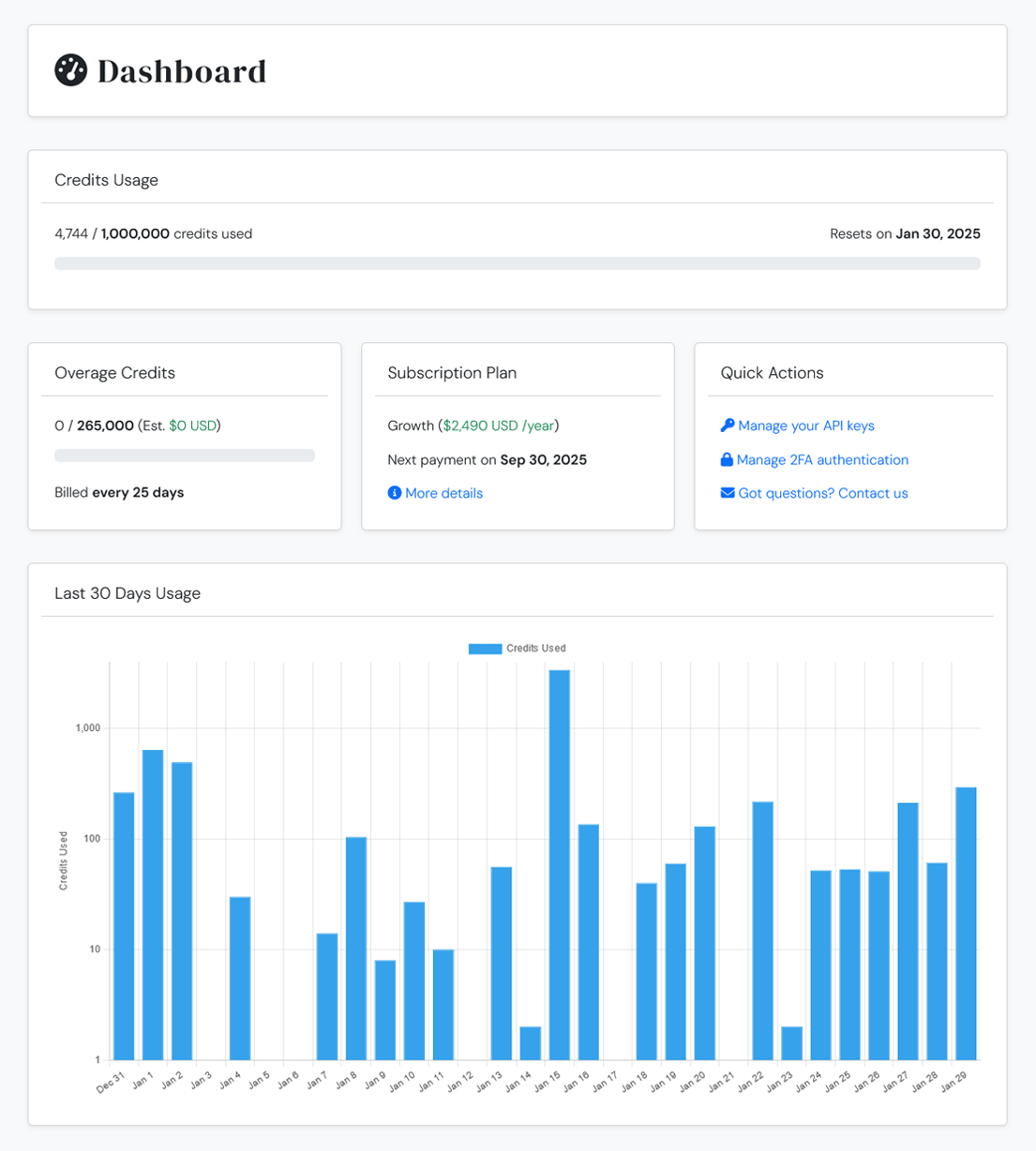🚀 Experience the new and improved APIVoid! Check out what's new
Free-trial abuse occurs when users exploit SaaS trials using temporary or free emails, bots, or anonymous IPs—hurting revenue and distorting analytics. Our solution helps your SaaS stop abuse at the source by effectively detecting throwaway and free emails, anonymous IPs, and bots to ensure trials reach real, high-value users.
⚡ Also read: How to stop fake accounts
IP Address: 185.225.69.232
Checking reputation...
Email: lenny122@cyberlinkhub(.)com
Checking reputation...
IP Address: 194.113.66.131
Checking reputation...
Email: skylark10944@aminating(.)com
Checking reputation...
Email: chimpanzee2694@maildrop(.)cc
Checking reputation...
Domain: warriggeyq(.)com
Checking reputation...
IP Address: 68.71.249.153
Checking reputation...
IP Address: 104.37.135.145
Checking reputation...
Email: rupert2@atomicmail(.)io
Checking reputation...






If your SaaS offers free trials or freemium accounts, you need strong security measures to screen signups and block suspicious users. A CAPTCHA is a must-have to stop bots, but it’s not enough on its own. Our IP and email intelligence APIs detect fake or disposable emails, anonymous IPs, known malicious and spam IPs, recently created or inactive domains, and more—giving you the insights needed to prevent trial fraud and protect your SaaS from misuse.
Check the safety reputation of an IPv4 or IPv6 address using multiple IP address blacklist services.
Check the reputation of a domain (e.g google.com) using multiple domain blacklist services.
Check the safety reputation of an email address, detect temporary emails and suspicious emails.
Validate and normalize a phone number, get location, carrier and line type, detect invalid and fake numbers.
Simply check if a domain name is actually parked, for example at Sedoparking or Parkingcrew.
Get the domain name registration date and how many days ago the domain name was created.
Along with IP reputation and email reputation checks (that are very important), you should apply additional methods to prevent free trial abuse in your SaaS platform. Options include CAPTCHA (but pay attention to usability), credit card verification at signup, SMS verification, and more. Keep reading below for more useful tips you should know about.
CAPTCHA is a solid first-line defense against common automated bots. But balance is key—make it too complex or unfriendly, and you risk frustrating users, harming UX, and even losing potential customers instead of protecting them. The best CAPTCHAs protect without getting (too much) in the way—keeping things simple and fast for real users while adding extra hurdles only when behavior suggests a bot. If solving the challenge feels like a chore, visitors may abandon your signup or purchase flow entirely. That’s why it’s important to choose a solution that is lightweight, accessible, and compatible with both mobile and desktop devices.
Always require users to confirm their email address during signup. Sending an automated message with a unique link ensures the address is valid and accessible before activating the account. For additional security, you can include a ‘Confirm Email’ button with a CAPTCHA on the verification page, or even introduce SMS verification as a second step. While SMS checks are effective at discouraging abusers, they may also deter some legitimate users who are reluctant to share their phone number. Nonetheless, email verification remains a fundamental safeguard and should always be implemented in any signup process or web form that collects user emails.
Instead of activating a free trial right after signup, request a valid credit card for verification. Even if no charge is made (e.g., a $0 authorization), this step can filter out suspicious accounts and ensures you onboard serious users with real purchase intent. Many SaaS products also let users select a plan, provide their card details, and enjoy the trial period before the subscription begins—charging automatically once the trial ends. However, some users may hesitate to enter card details before trying a product, or may fear accidental charges.
By monitoring IP addresses, you can block new signups once a certain number of accounts (N) have already been created from the same source. This helps detect and stop users attempting to create multiple accounts and abuse free trials. While it’s normal for some IPs to be shared within the same office or company network, a sudden spike of registrations from one IP within a short timeframe is a strong signal of suspicious or fraudulent activity.
Some email providers allow the use of aliases in the email username, such as user+alias@domain.com. This can be exploited to create multiple accounts using what is effectively the same email address, just with different aliases. Gmail also treats dots in the username as non-significant — for example, if you own johnsmith@gmail.com then any email sent to johnsmith@gmail.com, john.smith@gmail.com, or j.o.h.n.smith@gmail.com will all reach the same inbox. To prevent abuse you should remove the +alias and the dots (on a gmail address) before checking for duplicates.
Another option you can consider, is to restrict access to certain features during the free trial period. While this approach may prevent users from experiencing the product in its entirety, it helps strike a balance between offering a meaningful evaluation and controlling potential misuse or costs. Examples include adding watermarks to downloadable content, limiting access to resource-intensive features, or capping the number of times an action can be performed.
Depending on your SaaS target audience, you may want to block free email domains such as Gmail, Hotmail, or Yahoo, as well as email forwarding services like SimpleLogin or ProxiedMail. Since business users are far less likely to abuse free trials, restricting free emails can reduce fraudulent signups and protect freemium plans. If your product is aimed at companies rather than individuals, blocking free emails at signup can be an effective safeguard against abuse.
Instead of granting free trials automatically after signup, make them available on request. Add a ‘Request Free Trial’ button and ask users to briefly describe their intended use case. This approach helps you engage directly with potential customers, learn more about their company, and assess their legitimacy before enabling access. While it may introduce some manual work, it often results in higher-quality leads, stronger conversion rates, and a reduced risk of trial abuse. If you want to automate the process, you can grant the free trial a few minutes after the request to avoid delays, and eventually manually review it later or mark it as "to review" if the use case text is too short, for example.
Free trials are a great way to let potential customers experience your product, but they can also invite abuse and unnecessary costs (that can be potentially high in some cases). One alternative may be to remove the free trial entirely and instead offer a clear ‘30-Day Money Back’ guarantee. You can also showcase the product through demo videos, guided walkthroughs, or real use cases from paying customers. By highlighting the value of the paid version upfront, you reduce trial abuse while still giving prospects the confidence they need to purchase.
Account and API Security
Data sent on the Dashboard account and on our API services is always encrypted (on frontends and backends). We provide options to secure your account with 2FA and your API keys with IP CIDR whitelist.
All traffic on our API services is safely encrypted in transit with HTTPS SSL (TLSv1.2+) encryption.
Protect your API keys by allowing only trusted CIDR IP addresses and block unknown IP addresses.
You can enable 2FA authentication via Google Authenticator to additionally protect your account.
Your account data is encrypted in transit and at rest by default within Google Cloud Platform.


Key Service Features
With our service you can: use one or more APIs within your subscription, manage multiple API keys, customize the overages and more. Choose the right plan with the help of our pricing calculator.
Within your subscription you have access to all our 20+ (and growing) threat intelligence APIs.
We provide automated monthly or yearly subscription plans. With a yearly plan you get 2 months free.
Starting with the Startup plan, you can enable overages option to extend your monthly plan credits.
Based on your plan, you can manage multiple API keys (such as one for Production and one for Testing).
Create your account, pick a subscription plan, and make your first API call instantly with your API key—simple as that!
Get started now